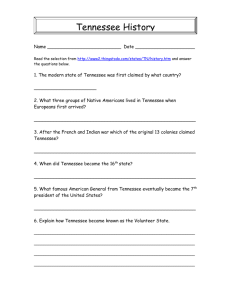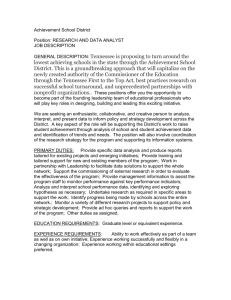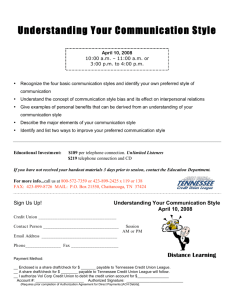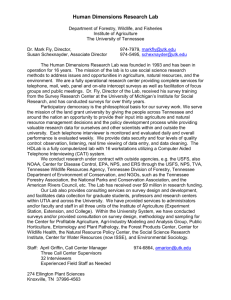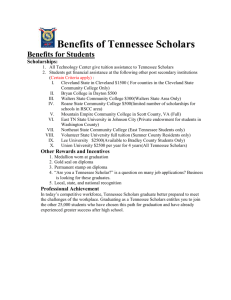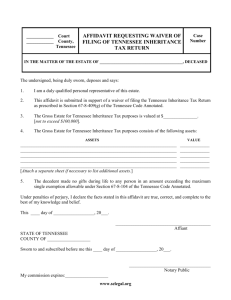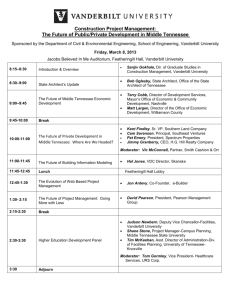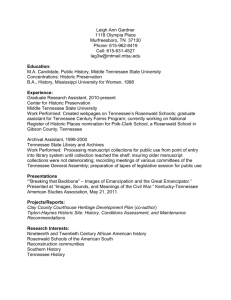File - Tennesseans for the Arts
advertisement
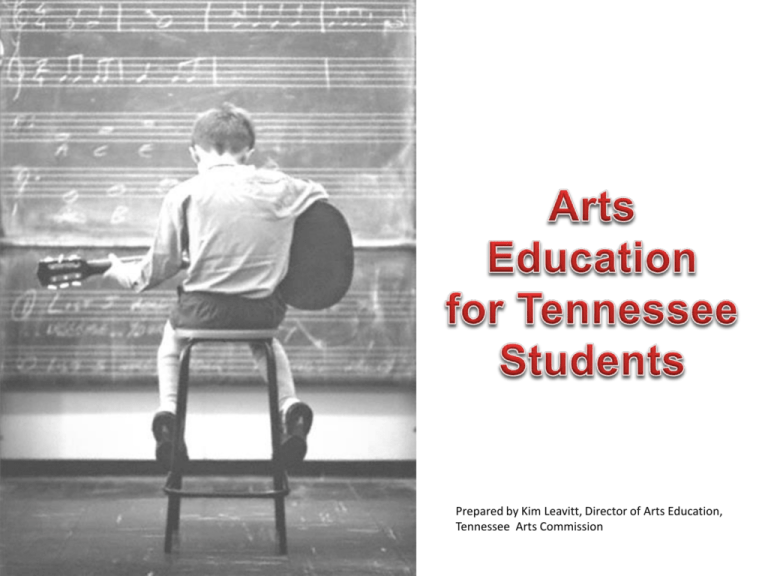
Prepared by Kim Leavitt, Director of Arts Education, Tennessee Arts Commission “The power behind the U.S. economy is its creative class; scientists, artists, engineers, technologists, and designers, to name a few. The creative sector accounts for nearly half of American wage income, but the U.S. is suddenly in danger of losing its edge.” -Richard Florida, Harvard Business Review, February 2004. Current Landscape Education in America The current U.S. public education system was designed to meet the needs of a World War I economy. We now exist in a global marketplace. A 21st century world demands that human beings be able to think for themselves; create new ideas; work in teams; be innovative; and possess the imagination to design future technologies and resources that we can’t even envision yet. The Arts teach these skills. No other subject does. Why Students need the Arts Research Proves Arts Education Works High school students who take arts classes have higher math and verbal SAT scores than students who take no arts classes. -The College Board Dance & music impact brain development in young children and have a profound impact on coordination and literacy. - The Dana Foundation The arts greatly impact the developmental growth of each child and are the equalizer among socio-economic boundaries. - The UCLA Imagination Project The Arts have a measurable impact on at risk youth in deterring delinquent behavior and truancy problems while also increasing overall academic performance. - U.S. Dept. of Justice & the National Endowment for the Arts Students who participate in the arts are . . . 4 times more likely to be recognized for academic achievement • 3 times more likely to be elected to class office • 4 times more likely to participate in a math and science fair • 3 times more likely to win an award for school attendance • 4 times more likely to win an award for writing an essay or poem - Living the Arts Through Language + Learning, Americans for the Arts Monograph THE ARTS IN TENNESSEE SCHOOLS The U.S. Department of Education considers the arts core academic subjects equal to math, science, reading, civics, economics, history, foreign language and geography. Yet, many Tennessee schools & districts have cut funding for the arts. The arts in Tennessee schools Legislation passed by the Tennessee General Assembly in 2008 encourages schools to fully implement art and music and integrate them into other core academic subjects. - Tennessee Code Annotated, Title 49, Chapter 6, Part 10 Encourages, not requires. No State Mandate The Tennessee State Department of Education does not require or monitor arts instruction in public schools. It is left to each school district to determine if the arts will be taught and how often. What Tennessee Schools Provide • High school graduates must have one fine arts credit to graduate. Most states require two. • The majority of Tennessee elementary schools provide art or music once a week for 30-45 minutes. Math, science, and other subjects are taught every day. The arts are the only academic subject that teach all of the 21st Century learning skills. Problem solving creativity imagination and critical thinking . One Example Making a Difference: Value Plus Schools • In 2006, the Tennessee Arts Commission established Value Plus Schools, an arts integration program piloted in six Title I, high poverty schools. • Teachers in Value Plus Schools are trained to integrate the arts into other subjects so that students learned math, science, and other content through the arts every day. • Within 3 years, all six schools experienced dramatic changes in academic achievement, student selfesteem, teacher retention & parental involvement. Value Plus Schools After only one year in the Value Plus program, one school saw math scores increase from 86% proficient to 91%. After three years, students tested 100% proficient in math. For economically disadvantaged students, Value Plus has closed the achievement gap. Four of the six schools saw test scores in math and reading increase an average of 6-10 percentage points each year. These results were accomplished because schools chose to make the arts an integral part of the curriculum every day. Think of what would happen if every school embraced the arts. National research and programs such as Value Plus Schools prove the arts are critical to educating the whole child. Doesn’t your child deserve a complete education? Play a Part: Support the Arts in Schools Add your voice to ongoing advocacy efforts. Join Tennesseans for the Arts, our statewide advocacy organization. www.tn4arts.org For more information, contact: Tennesseans for the Arts at www.tn4arts.org Tennessee Arts Commission at www.arts.state.tn.us
